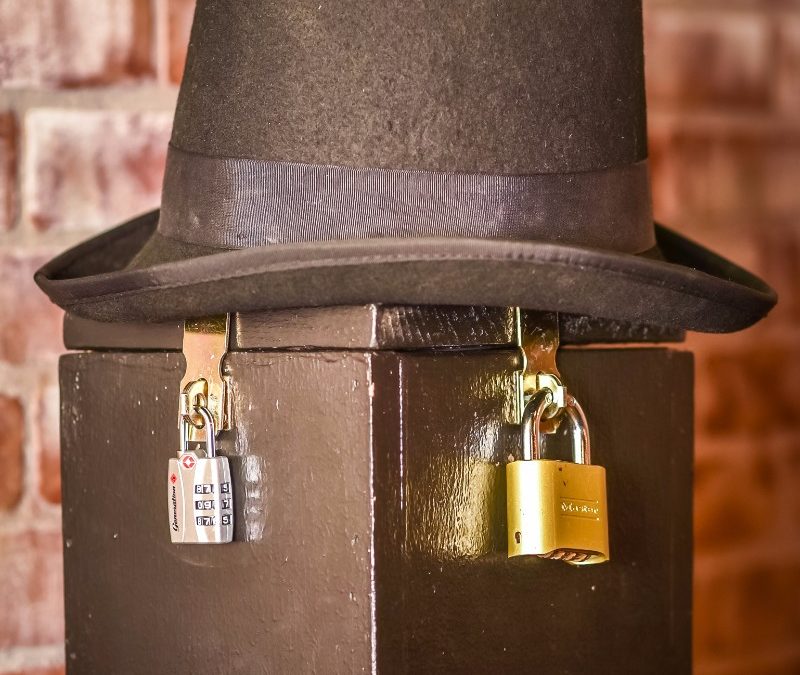
If you’ve ever played an escape room, chances are you walked away from the experience with a whirlwind of emotions and wondering “how do escape rooms work?” Perhaps you left with the exuberance of victory, or likely the well-deserved shame of defeat. Win or lose, you might have also been a bit mystified about how exactly your actions sparked that cool effect inside. Or maybe you’re completely new to escape rooms and you’d like a peek behind the curtain to see how all the magic happens. In any case, escape rooms are atop the list of fun activities to do in Atlanta so there’s no better time to learn how they function.
Deciphering Your Escape Room
No matter the story, theme, or puzzle in your mystery room, all progression in an escape room is based on your interaction within the environment. You place a statue down and a light appears. You press a series of tiles in a certain order and the room floods with music. Sometimes, these interactions are so grand it may feel like magic. However, to be a good detective you must also be a skeptic. It’s not wizardry, it’s technology. Whether mechanical or electronic, technology is what drives all progress through an escape room. After learning the basics of how escape rooms operate, you’re much more likely to notice where these bits of technology are embedded in your room. Having this advantage you’re bound to become a savvy escape room artist.
How Do Escape Rooms Work?
In your typical escape room there will be a main computer monitoring the states of all the gadgets and sensors inside the room. This computer watches over inputs within the room (when you flip a switch or push a button, for instance) and send out the corresponding output (switching off or turning on any electronic component). It’s a very simple system, you mess around with some interactive sensors, the computer picks up on it and your work is correct the computer tells a piece of equipment to change its state. As we can see, you, the player, simply need to find where these interactive elements lie in order to begin working with them. Below we’ll see how to spot these interactive pieces.

Electronic Clues to Look For:
- Buttons & Switches: Whether these are discreetly stylized or arranged in a set, their operation remains the same. If you see a button or switch, nine times out of ten, you’ll need to use it.
- Lighting: Unless it’s purely aesthetic, expect darkened areas to be eventually be illuminated. Also, many escape rooms have a love for blacklight puzzles so a dark room may perhaps turn into a trail to follow.
- Audio: Listen carefully to any audio playing in the background, especially if it includes human voices. There may be important information hiding in plain sight, or sound rather.
- Electronic Locks: In most cases, these will not resemble a traditional lock. In fact, they may even be completely hidden from view. If you believe that a compartment must open but you cannot see a lock, you might be interacting with an electronic lock. Getting a electronic lock to open will depend on the puzzle. As we’ve learned an escape room monitors inputs from your actions so it is possible that interacting with buttons or switches will cause the lock to open. In other cases, you may be required to find some sort of key to progress. Since you are not dealing with a traditional lock, chances are you will not be looking for a traditional key, either. Such keys can come in many abstract forms but most likely it will contain a metallic or plastic core. Metallic keys will function with electromagnetic locks, the lock senses the magnetic field from the key and knows to open. Plastic keys will function using wireless communication, essentially, there is a small antenna inside of the plastic, allowing our main computer to know when it is placed near our lock, prompting it to open.
Mechanical Clues to Look For
- Doors: As it turns out most forms of escape involving moving through some type of door.
- Keys & Locks: These are much simpler than their electronic counterparts. If you find either a key or lock, you know you need to search for its partner. Unless you are incredibly skilled (by skilled I mean lucky) every lock you see will need to be opened before you can successfully complete your escape.
- Windows & Holes: Look through these, search for clues. If it’s within the rules of the game, try reaching inside and scouring for items.
- Hinges: Noticing hinges on a piece of equipment is a dead giveaway that it will swing open in some fashion. Or maybe it won’t, doesn’t hurt to try.
This is only a small glimpse into the question “how do escape rooms work?” and the mysteries hidden in escape rooms. Most of them will have a few extra tricks up their sleeves that will elude the hints discussed here. For example, our very own Al Capone’s Speakeasy uses social interaction as the method of game progression. It’s a clever spin on your box-standard escape room that provides a fresh challenge for the veteran players while still being manageable for first-timers. For your more traditional rooms, keep in mind the tips we’ve covered. If you like to put your newfound knowledge to the test, consider trying out one of our rooms here at Time to Escape and see how you fare.